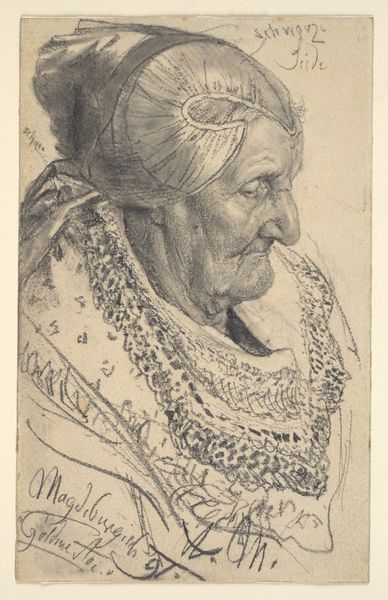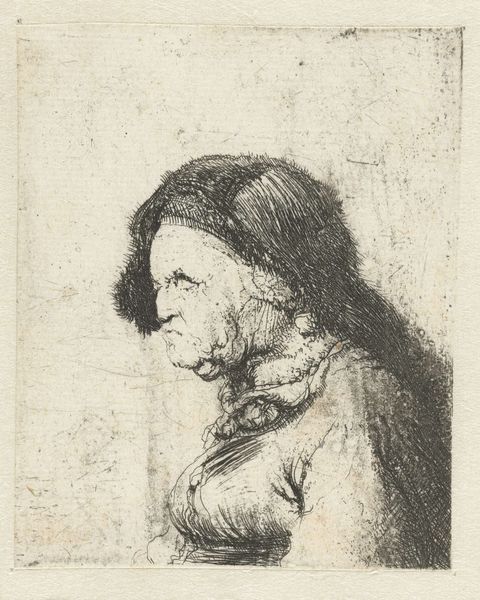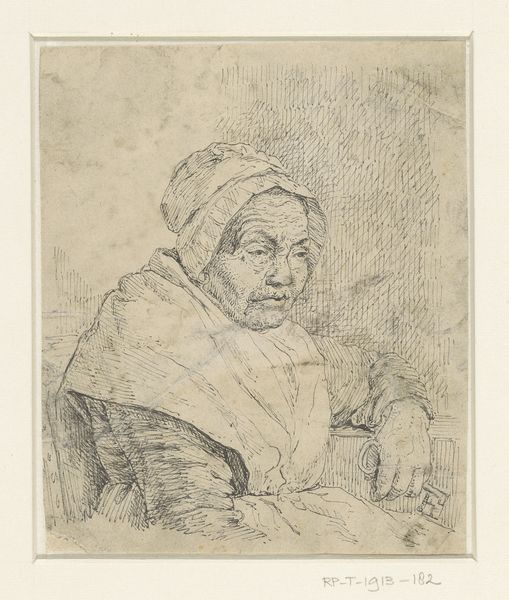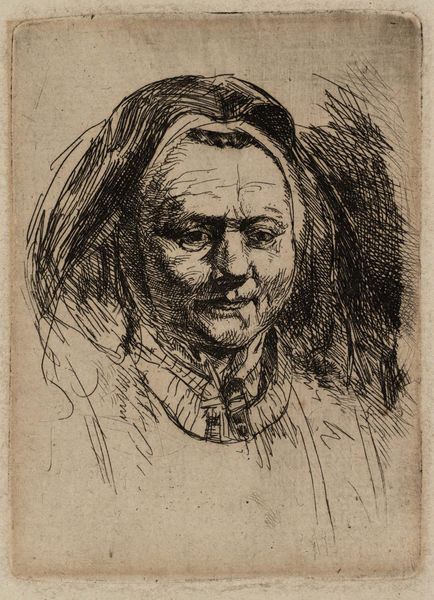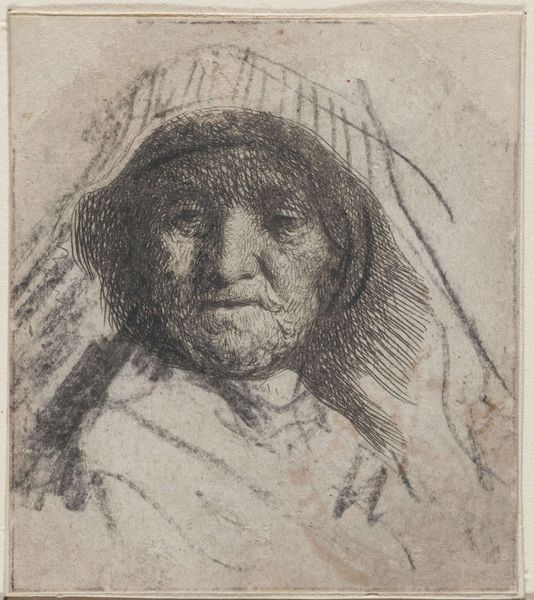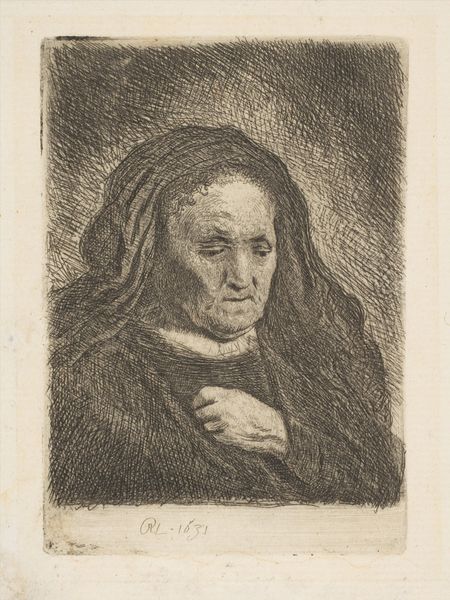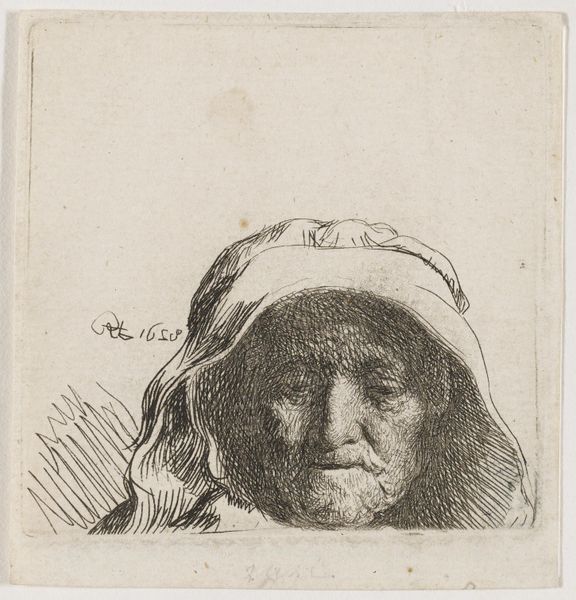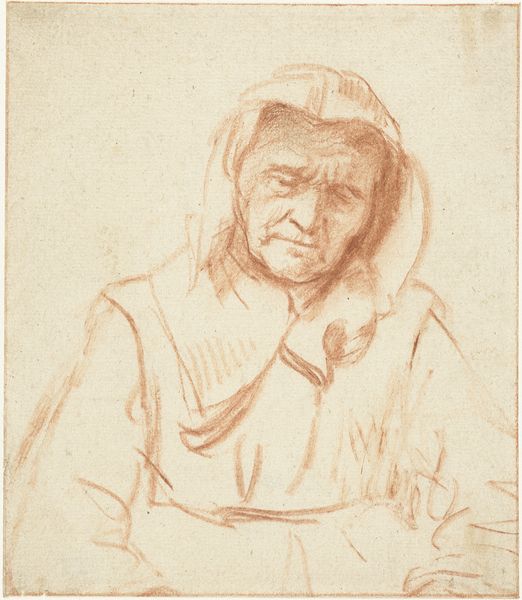
drawing, print, etching, ink
#
portrait
#
drawing
#
ink drawing
#
baroque
# print
#
pen sketch
#
etching
#
ink
#
realism
Dimensions: height 66 mm, width 56 mm
Copyright: Rijks Museum: Open Domain
Andries Both created this etching, "Portretbuste van de moeder van Rembrandt," sometime in the 17th century. Etching is a printmaking process using acid to corrode the unprotected parts of a metal surface to create a design. The plate is prepared with a waxy, acid-resistant ground. The artist scratches an image into the ground with a pointed tool, exposing the metal. The plate is then immersed in acid, which bites into the exposed metal lines. Once the design is etched to the desired depth, the ground is removed. The plate is inked, and the surface wiped clean, leaving ink in the etched grooves. Finally, the plate is pressed onto paper, transferring the ink and creating a print. The etching process allows for fine detail and delicate lines, which capture Rembrandt's mother's likeness. Both's skillful use of the etching technique, combined with his artistic talent, results in a print that captures the essence of his sitter. Understanding the materials, techniques, and context helps us appreciate this portrait's full meaning.
Comments
No comments
Be the first to comment and join the conversation on the ultimate creative platform.


